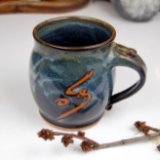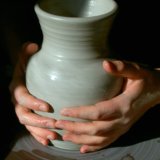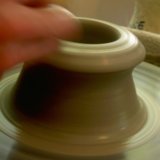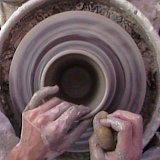|
Pottery Supplies - RibsOne of the most varied of all the pottery supplies is the throwing rib. Clay ribs come in many different materials, including wood, metal, and rubber. They can be purchased in a prefabricated kit, custom made by a woodworker, or homemade by you. The main purpose of the rib is to assist the potter in shaping the pot. This is why custom ribs are of value, because they can be designed to fit a particular shaped pot that you like making. Many potters with woodworking experience will carve their own using various hardwoods. See this article for some really great information on the best types of wood and how to create your own ceramic tools. Other materialsGreat flexible ribs can also be custom made out of everyday materials such as plastics. I've cut old music CD's to custom shapes. You can also use yogurt lids. The material you choose can have whatever thickness and flexibility you like for your particular clay pot project. Tips for Using RibsRibs are used primarily for shaping and smoothing the clay, but they have other uses as well. They are particularly useful for compressing the clay in the bottom of a pottery bowl or plate. This strengthens the clay, thins the bottom and helps to prevent cracking during firing. Ribs are excellent for scraping away excess clay from the wheel head during and after throwing. This can make the centering process easier and also makes clean up quick and easy. After you've cut the pot off the wheel use the rib to scrape the excess clay off the center of the bat. Do this while the wheel is spinning and it requires almost no effort. It's much easier that scraping away at it, or chiseling it off after it dries.
Thanks for checking out this short pottery lesson on ribs. To return to the previous page for more about other pottery supplies and ceramic tools click the link below. Happy Potting.
Return From Ribs |
Learn Right
The First Time
Pottery on the Wheel for Beginners
is a complete beginners guide
to learning pottery.
It will
take you from
never having touched clay
to creating finished pottery
you can use every day.
Also read it on Kindle
Featured Pages
Choose Your Wheel
Thank you so much for
visiting my website!
Discover How I Made It!
Happy Potting!
- Steve










